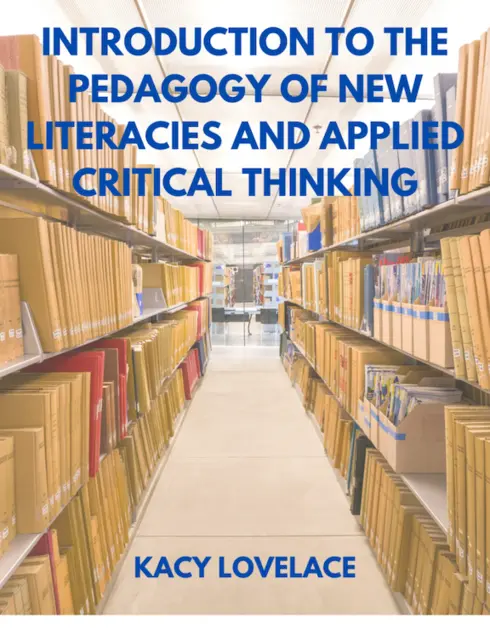
Introduction to the Pedagogy of New Literacies and Applied Critical Thinking
No ratings
Kacy Lovelace, Marshall University
Copyright Year:
Publisher: Marshall University
Language: English
Formats Available
Conditions of Use
![]() Attribution-NonCommercial
Attribution-NonCommercial
CC BY-NC
Table of Contents
- Introduction
- Acknowledgments
- I. History and Theory of Information, New Literacies, and Pedagogy
- 1. Information and New Literacies Theory: Theories of Information Literacy, Digital Literacy, Transliteracy/Metaliteracy, and Visual Literacy
- 2. Introduction to Pedagogy and Andragogy, Learning Styles, Online Vs. Face-to-face Learning
- II. Choosing Learning Outcomes and Activities For Information Literacy Needs
- 3. Determining Information and Instructional Needs of Users
- 4. Introduction to Planning Information Literacy Sessions: Developing and Teaching
- III. Teaching and Designing Instruction of New Literacies
- 5. Practical Tools and Material for Enhancing your Information Literacy Session
- 6. Assessing Your Information Literacy Instruction
- IV. Applied Critical Thinking
- 7. Assessing Critical Thinking Dispositions in an Era of High-Stakes Standardized Testing
- 8. Imagination, Critical Thinking, and Teaching
- Glossary
About the Book
This textbook is an introduction to information and new literacies instruction in a variety of libraries and other information-related organizations and for a variety of patrons (including K-12, ESL, special needs learners, and adult learners). Topics include the history and theoretical bases of literacy instruction, instructional program development, and pedagogical and evaluation techniques. Featuring hands-on assessments for students pursing an Instructional Technology and Library Science emphasis, this text introduces new literacies, provides a comprehensive look at literacy instruction, literacy instruction improvement, and literacy instruction lesson planning with a focus on critical thinking.
About the Contributors
Author
Kacy Lovelace, Marshall University
